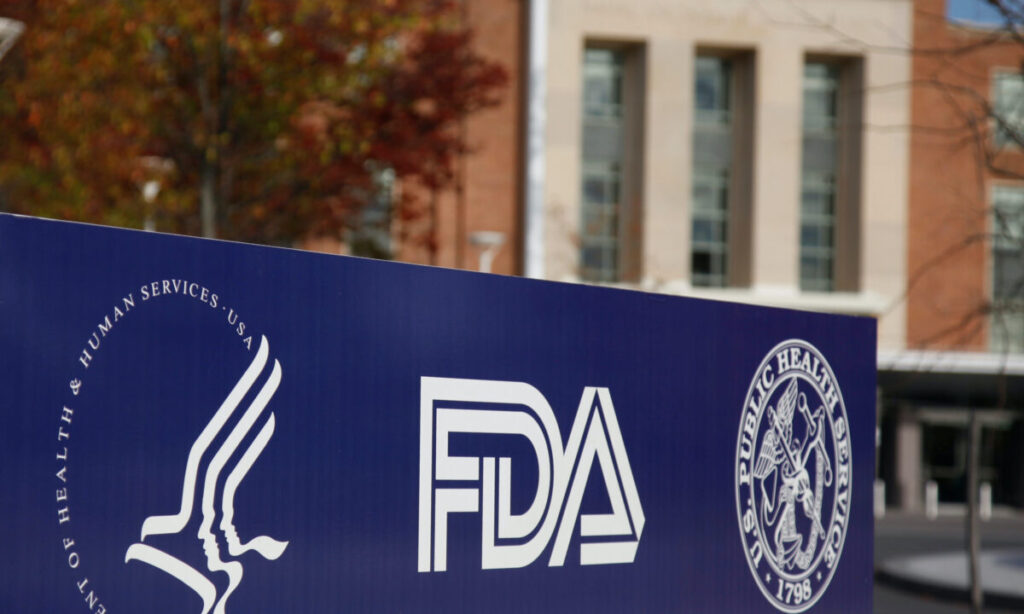Why does FDA approve these poisons to be added to commercial foods and drinks?
The FDA has approved many poisonous food additives that may be questionable that appear in our commercially available food every day, such as
1. Sodium nitrate: Added to processed meats to stop bacterial growth.
NOTE: from NutriNeat – Dangers of Sodium Nitrate
Some studies suggested that excessive consumption of NaNO3 through foods can lead to certain types of cancers like gastric cancer, esophageal cancer, colorectal cancer, colon cancer, etc. This chemical compound may trigger migraine headaches in people with a migraine history. Increased number of deaths due to Alzheimer’s, diabetes, and Parkinson’s have been attributed to the increased use of NaNO3 in foods. Some researchers argue that sodium nitrate is responsible for damage to DNA, which in turn increases the risk of the aforementioned diseases. By https://nutrineat.com/sodium-nitrate-dangers
2. Formaldehyde is approved as an indirect food additive.
(NOTE: EPA – Health Effects of Formaldehyde
How can you be exposed to formaldehyde? It is by breathing air containing off-gassed formaldehyde. Everyone is exposed to small amounts of formaldehyde in the air that has off-gassed from products, including dishwashing liquids and fabric softeners in your home.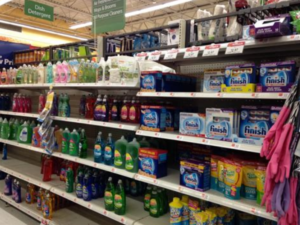
Formaldehyde can cause irritation of the skin, eyes, nose, and throat. High levels of exposure may cause some types of cancers. Where do you find formaldehyde? Resins used in the manufacture of composite wood products (i.e., hardwood plywood, particleboard, and medium-density fiberboard); Building materials and insulation; Household products such as glues, permanent press fabrics, paints and coatings, lacquers and finishes, and paper products; Preservatives used in some medicines, cosmetics and other consumer products such as dishwashing liquids and fabric softeners; and Fertilizers and pesticides. It is a byproduct of combustion and certain other natural processes, and so is also found in: Emissions from un-vented, fuel-burning appliances, like gas stoves or kerosene space heaters; and Cigarette smoke. By https://www.epa.gov/formaldehyde/facts-about-formaldehyde#whatare)
3. Acetaldehyde is found in fruits, vegetables, bread, vinegar, and milk and milk products.
 (NOTE: From CDC Damages from Acetaldehyde
(NOTE: From CDC Damages from Acetaldehyde
Exposure Routes are inhalation, ingestion, skin, and/or eye contact.
Symptoms are irritation of eyes, nose, and throat; skin burns; dermatitis; conjunctivitis; cough; central nervous system depression; delayed pulmonary edema; In Animals: kidney, reproductive, teratogenic effects; [potential occupational carcinogen] Target Organs. By https://www.cdc.gov/niosh/npg/npgd0001.html)
4. Sulfites: Used to keep prepared foods fresh.
They are found in Canned/frozen vegetables, fruits and their juices, Dried vegetables and fruits, Fruit syrups, jellies and jams, and fillings, Processed tomato products such as purees and pastes, Condiments such as horseradish, ketchup, mustard, pickles, relishes, Vinegar, Cornmeal, cornstarch, cereal, crackers, muesli, Boxed rice and noodle mixes, Baked goods, Granola bars, Deli meats, sausage, hot dogs, Dehydrated, peeled, mashed, and pre-cut potatoes (e.g., French fries). Found in Bottled lime and lemon juices and concentrates, Alcohol and non-alcoholic beer, cider, and wine, Sweeteners such as syrup, molasses, and dextrose, Gravies, sauces, soups, and dressings, Soy products, Pectin/gelatin, and over-the-counter and prescription medications.
(NOTE: Dangers of drinking/eating sulfites or sulfites by NaturallySavvy
Sulfites may cause allergy-like symptoms, such as breathing problems, diarrhea, dizziness, drop in blood pressure, flushing, hives, trouble swallowing, upset stomach, and vomiting. Sulfites can trigger anaphylactic shock and asthma. Sulfites can trigger headaches and migraines, with chronic fatigue and muscle cramps. Individuals who suffer from migraines are often advised to stay away from foods that contain sulfites. Three other sources to consider are sulfites in beer, sulfites in wine, and some medications. Sulfites can interfere with the absorption of B vitamins. By https://naturallysavvy.com/care/5-reasons-sulphites-or-sulfites-are-bad-for-you/0
5. Azodicarbonamide: Used in bagels and buns.
NOTE: Big Health Problems with eating
Azodicarbonamide?
Azodicarbonamide Can Cause respiratory and asthma Concerns. According to a World Health Organization (WHO) follow-up report, regular occupational exposure to azodicarbonamide can lead to asthma and allergy symptoms within just three months of exposure. By https://explore.globalhealing.com
6. Potassium bromates: Added to bread to increase volume.
NOTE: HAZARD SUMMARY of Potassium Bromate
Long-Term Effects * Potassium Bromate can irritate the lungs. Repeated exposure may cause bronchitis to develop with cough, phlegm, and/or shortness of breath. * Repeated exposure to Potassium Bromate may affect the nervous system causing headache, irritability, impaired thinking and personality changes. * Potassium Bromate may damage the kidneys. By https://nj.gov › health ›
7. Propyl gallate: Added to fat-containing products.
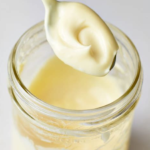 Propyl Gallate is common in foods containing fat such as vegetable oil, mayonnaise, chips, meat products, potato sticks, Chewing gum, Soup bases, Cereals, and many personal care products.
Propyl Gallate is common in foods containing fat such as vegetable oil, mayonnaise, chips, meat products, potato sticks, Chewing gum, Soup bases, Cereals, and many personal care products.
NOTE:The Dangers of Propyl Gallate – from StopKillingMyKids.com
Propyl Gallate can cause allergic reactions in the form of an asthma attack, may cause stomach and skin irritation, liver damage, and kidney damage, and has the potential to increase your chances of having cancer. By https://www.stopkillingmykids.com › the-dangers-of-propyl-gallate
8. BHA/BHT: A fat preservative, used in foods to extend shelf life.
 BHT is used in chewing gum, animal feed, preserved meats, dehydrated foods, baked goods, snack foods, certain edible fats, and other foods that contain fats and additional flavoring. Both are found in food as well as cosmetics and other personal care products.
BHT is used in chewing gum, animal feed, preserved meats, dehydrated foods, baked goods, snack foods, certain edible fats, and other foods that contain fats and additional flavoring. Both are found in food as well as cosmetics and other personal care products.
NOTE: The Dirty Dozen: Health Dangers of BHA and BHT – David Suzuki Foundation
Long-term exposure to high doses of BHT is toxic in mice and rats, causing liver, thyroid, and kidney problems and affecting lung function and blood coagulation. BHT can act as a tumor promoter in certain situations. By https://davidsuzuki.org › living-green › dirty-dozen-bha-bht
9. Propylene glycol: Propylene glycol is a chemical compound found in antifreeze.
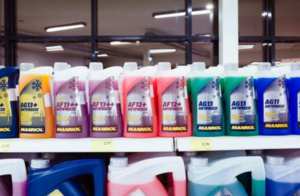 This poisonous antifreeze additive is FDA-approved for personal care items, cosmetics, pet food, and human food and drink, as well… including ice cream. Thickens dairy products and salad dressing. In the case of ice cream, propylene glycol is often lumped in with “natural flavors” or “artificial flavors” and not listed in the ingredient list.
This poisonous antifreeze additive is FDA-approved for personal care items, cosmetics, pet food, and human food and drink, as well… including ice cream. Thickens dairy products and salad dressing. In the case of ice cream, propylene glycol is often lumped in with “natural flavors” or “artificial flavors” and not listed in the ingredient list.
NOTE: Dangers of eating, injecting with medications, and putting propylene glycol on your body – Easy Health Options
Rashes and allergic reactions, Kidney and liver toxicity. Propylene glycol is added to many IV medications. People with liver or kidney disease should be cautious about taking medications that contain propylene glycol. Neurological problems and medications have caused seizures, convulsions, and other neurological symptoms in some people, plus Heart risks. There have been a couple of cases where children receiving high doses had problems with heart function. By https://easyhealthoptions.com › propylene-glycol-health-dangers-home
The danger of Chemical absorption of propylene glycol: Perhaps the most alarming thing about it is that it’s a “penetration enhancer.” That means it allows stuff to penetrate your skin more easily. If you’re using personal care products on your skin that contain propylene glycol and other chemical ingredients, it will allow more chemicals to enter your bloodstream.
10. Butane: Put in chicken nuggets to keep them tasting fresh.
NOTE: Poisonous Butane is put in fried chicken – Story by Organic Authority
 Fried chicken at McDonalds – they add a heaping spoonful of tertiary butylhydroquinone (TBHQ), which is a chemical preservative and a form of butane (AKA lighter fluid). One gram of TBHQ can cause “nausea, vomiting, ringing in the ears, delirium, a sense of suffocation, and collapse,” according to A Consumer’s Dictionary of Food Additives. Five grams of TBHQ can kill you.
Fried chicken at McDonalds – they add a heaping spoonful of tertiary butylhydroquinone (TBHQ), which is a chemical preservative and a form of butane (AKA lighter fluid). One gram of TBHQ can cause “nausea, vomiting, ringing in the ears, delirium, a sense of suffocation, and collapse,” according to A Consumer’s Dictionary of Food Additives. Five grams of TBHQ can kill you.
Then they Sprinkle on thirteen other corn-derived ingredients, and you’re only about twenty shy as many ingredients as a single chicken nugget from McDonald’s. And you were using pulverized chicken skin and mechanically reclaimed meat for your chicken.
Hundreds of thousands of Americans consume these ingredients in Chicken McNuggets, which McDonalds claims are “made with white meat, wrapped up in a crisp tempura batter.”
However chicken only accounts for about 50% of a Chicken McNugget. The other 50% includes a large percentage of corn derivatives, sugars, leavening agents, and other completely synthetic ingredients, meaning that parts of the nugget do not come from a field or farm at all. They come from a petroleum plant. By https://www.organicauthority.com/buzz-news/what-is-in-fast-food-chicken-hint-its-not-chicken
PS: The full ingredient list for my mother’s fried chicken: Bone-in chicken pieces, egg, milk, flour, organic olive oil, salt & pepper.
11. Monosodium glutamate (MSG)
“MSG is more common in food than you probably realize” (Healthline.com). Found in fried chicken, pizza, sausage, cheese, most canned and packet soups, seasonings, powdered gravy granules, stock and bouillon cubes, cold meat cuts, prepackaged deli meat, certain bacon products, and pepperoni and cured ham slices. Foods that rely heavily on chemical preservatives to keep them fresh sometimes include monosodium glutamate. MSG preserves the taste of these products no matter how long they have been in the store.
NOTE: The harmful effects of MSG! By global healing
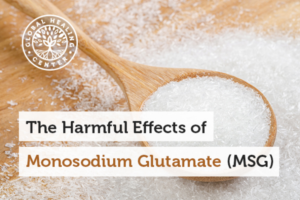 Why is MSG Harmful? The glutamate industry is fully aware of the harmful effects of MSG, that it is a toxic substance. They know that ingesting their toxin can cause diabetes, adrenal gland malfunction, seizures, high blood pressure, excessive weight gain, stroke, including obesity, central nervous system disorder, reproductive malfunctions, Nausea, Weakness or fatigue, Heart palpitations, Headache, Sweating or flushing, Numbness, Chest pain, Hives, and Swelling of the throat.
Why is MSG Harmful? The glutamate industry is fully aware of the harmful effects of MSG, that it is a toxic substance. They know that ingesting their toxin can cause diabetes, adrenal gland malfunction, seizures, high blood pressure, excessive weight gain, stroke, including obesity, central nervous system disorder, reproductive malfunctions, Nausea, Weakness or fatigue, Heart palpitations, Headache, Sweating or flushing, Numbness, Chest pain, Hives, and Swelling of the throat.
If you continue to eat MSG you will experience some of these conditions. How can you eliminate MSG from your diet? By https://explore.globalhealing.com/harmful-effects-of-monosodium-glutamate-msg/
12. Disodium inosinate/ Disodium guanylate: Used in snack foods and is very similar to MSG.
 It is a flavor enhancer that can be used in many processed foods to strengthen the “meaty” taste or generate a savory, meaty, or broth-like taste, commonly by combination with MSG or conjunction with disodium inosinate.
It is a flavor enhancer that can be used in many processed foods to strengthen the “meaty” taste or generate a savory, meaty, or broth-like taste, commonly by combination with MSG or conjunction with disodium inosinate.
NOTE: Bad Side Effects can cause flushing – by Healthy Heart
Flushing as we know is due to the dilation of blood vessels and it causes increased blood circulation. The tremendous increase in blood flow makes the skin appear red. Disodium inosinate can have a direct impact on the blood vessels, causing them to widen, which results in flushed skin. Disodium inosinate tends to mimic the action of glutamate, a neurotransmitter that is known to dilate blood vessels. By https://healthhearty.com/side-effects-of-disodium-inosinate
Additional FDA-approved Poisons
- Enriched flour: Used in many snack foods. A refined starch that is made from toxic ingredients.
- Recombinant Bovine Growth Hormone (rBGH): Genetically engineered version of natural growth hormone in cows. Boosts milk production in cows. Contains high levels of IGF-1
- Refined vegetable oil: Includes soybean oil, corn oil, safflower oil, canola oil, and peanut oil.
- Sodium benzoate: Used as a preservative in salad dressing and carbonated beverages.
- Brominated vegetable oil: Keeps flavor oils in soft drinks suspended. (Not required to be listed on food labels.)
- Propyl gallate: Found in meats, popcorn, soup mixes, and frozen dinners.
- Olestra: Fat-like substance that is unabsorbed by the body. Used in place of natural fats in some snack foods.
- Aluminum: A preservative in some packaged foods that can cause cancer.
Just to name a few.
